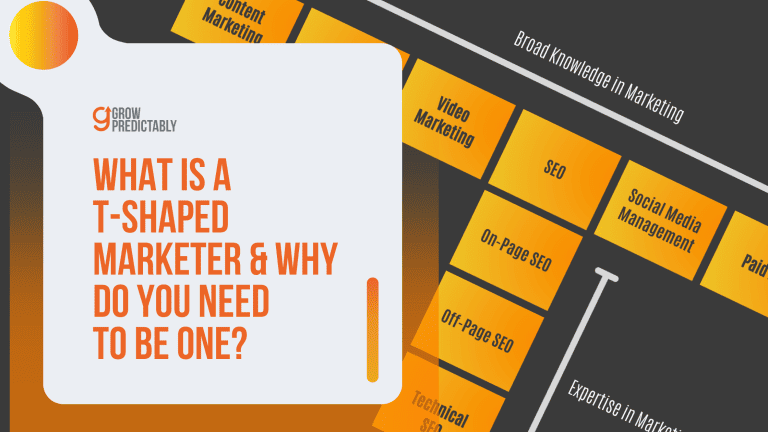The Four C’s of Marketing: 4 Guaranteed Ways to Create Loyal Customers
To build a loyal customer base, businesses must look beyond their brand and products. It’s crucial for business marketing to consider potential customers as well. The four key “C’s” of marketing can guide you in this direction: consumer, cost, convenience, and communication.
In the past, “the 4 P’s of marketing” was the go-to concept. However, that approach has become outdated and less effective in our ever-evolving marketing landscape.
When applied correctly, the Four C’s enable businesses to understand their customers better and devise strategies tailored to their needs.
While the Four C’s may not be a one-size-fits-all solution, they are invaluable for any business aiming to enhance its marketing strategies.
Now, let’s delve into each of these essential components.
How The 4 C’s of Marketing Became The Norm

Before the emergence of the four C’s of marketing, businesses relied on a different model to develop their marketing strategies. This model was known as the four Ps of marketing, encompassing product, price, promotion, and place.
However, in today’s marketing landscape, this approach is considered outdated.
In 1990, Bob Lauterborn introduced the four C’s of marketing as a superior alternative to the 4 Ps. While the four P’s aimed to deconstruct effective product-selling methods, their focus remained solely on the product. The four C’s of marketing shift the emphasis to the consumer, ensuring a more customer-centric approach.
The four C’s of marketing are consumer, cost, convenience, and communication.
The Cs of marketing is regarded as a more effective framework because they prioritize the consumer over the product. By adopting a customer-centric approach, you can better comprehend your consumers’ desires and craft messaging that resonates with them.
When businesses successfully incorporate these C’s of marketing into their marketing mix, customers feel more attended to and valued, rather than merely being sold a product—something challenging to achieve with the 4 Ps of marketing.
In terms of marketing, the 4 C’s offer a comprehensive understanding of how to earn customers’ trust and loyalty. This enables businesses to develop more focused and effective marketing campaigns.
Now, let’s explore these C’s and discover how they contribute to a business’s marketing strategy.
What Are The 4 Cs of Marketing?
There are numerous aspects to explore in the marketing world, and the four C’s are unquestionably among the most important.
This acronym signifies Consumer, Cost, Convenience, and Communication, emphasizing the key areas to concentrate on when building an effective marketing campaign.
1. Consumer wants and needs
2. Costing for a win-win situation
3. Convenience in buying
4. Communication
1. Consumer wants and needs
The first ‘C’ in the four Cs of marketing emphasizes a business’s understanding of its customers and how this knowledge can deliver an exceptional customer experience.
Potential customers are vital for any business, making it crucial to create an outstanding customer experience that caters to their desires and requirements for a product or service.
Did you know that 86% of consumers are willing to pay more for a great customer experience?
This entails recognizing your target audience and their needs and surpassing their expectations with your offerings. Ultimately, this focus will determine the success or failure of your marketing efforts.
Moreover, continuous learning and adaptation are essential as consumer preferences evolve. A strong emphasis on customer experience can ensure customer loyalty and foster business growth.
2. Costing for a win-win situation
The second ‘C’ in the marketing mix emphasizes the importance of providing fair, competitive prices for both the business and the consumer.
A product or service’s total cost encompasses various expenses, such as materials, labor, advertising (including Google ads), overhead, and more. To sustain your business, setting prices that are just and cover all associated costs is crucial.
At the same time, overpricing your offerings and alienating your target audience is a risk to avoid. Striking the perfect balance is essential – finding that sweet spot where you can cover expenses while offering reasonable prices ensures a win-win situation for everyone involved.
3. Convenience in buying
This third ‘C’ highlights the significance of ensuring a hassle-free experience for your customers when doing business with you.
Convenience plays a crucial role in business success. After all, who wants their customers to struggle when interacting with their brand? To achieve this, you can focus on various aspects of your business, particularly those directly impacting the customer experience.
By prioritizing convenience at every opportunity, you will simplify the process for your customers to do business with you, ultimately boosting sales or online transactions.
4. Communication
The final ‘C’ in this marketing mix emphasizes the importance of clear and concise communication in your marketing messages while being receptive to customer feedback.
Effective communication lies at the heart of digital marketing and business success. Whether you promote your products or services to customers or engage with your target audience online, clarity and conciseness in your messaging are crucial.
Remember: Everything that comes from your brand is considered a part of what you represent.
Simultaneously, it’s vital to pay attention to your customer’s feedback. They might offer invaluable insights that you haven’t considered. By dedicating time to communicate efficiently and listening to their input, you can enhance your chances of business success.
Now that we’ve covered the four C’s and their objectives, how can we implement them to earn your customers’ trust and loyalty?
Tips on How to Use The 4 C’s of Marketing in Business

To create a successful marketing campaign, learning how to harness the power of the four Cs of marketing is essential.
This section will explore how you can incorporate each of the four Cs to devise a successful marketing strategy for your company.
1. Understand who your target customers are and their wants/needs
Marketing involves comprehending your market and catering to customer needs, desires, and necessities. It’s not focused on you but instead on them. By prioritizing the customer, everything else aligns seamlessly.
So, what’s the key to identifying the wants and needs of your target audience? Here are some helpful suggestions:
- Research your target audience
Become well-versed with your target customer. Discover the ways to connect with them offline and, more importantly, online.
- Document everything you learn
Be attentive to feedback and utilize it to enhance your products/services. Always strive to retain and document any input or opinions from potential customers.
- Study your competition
Often, your rivals share the same target customers as you. By closely observing your competitors, you can gain valuable insights into their tactics and understand how they engage with their customer base.
- Research your target audience
- Document everything you learn
- Study your competition
2. Price your products wisely
When setting a product’s price, it’s crucial to balance the amount consumers are willing to pay and the desired profit for the company.
Setting a price too high might deter consumers from purchasing the product, whereas selling products at too low could negatively impact your profit margin, particularly for small businesses.
A helpful approach to determining the appropriate price is conducting market research to evaluate the pricing of similar products. Remember that pricing can be dynamic, so it’s essential to recognize when and how much to adjust in response to various factors and market fluctuations.
Consider the following questions as a starting point when establishing the pricing for your offerings:
- What is the market value for this product?
A practical method to identify the suitable price is by conducting market research and examining the pricing of comparable products.
- How much do you need to make to cover costs and turn a profit?
This can also be accomplished through research. Determine the amount customers are willing to pay and gauge how much you can raise the price before they hesitate.
- What are your competitors charging for a similar product?
Regardless of your niche, competition is inevitable. By analyzing your competitors, you can gain valuable insights regarding pricing strategies.
- What is the market value for this product?
- How much do you need to make to cover costs and turn a profit?
- What are your competitors charging for a similar product?
3. It should be easy for everyone to buy from you
Capturing and retaining your target customer’s attention as a business involves ensuring a hassle-free experience throughout the purchasing process. Whether they’re buying from your brand or simply exploring more about you online—aim for simplicity!
Here are some approaches to help your business excel in providing convenience:
- Make sure your online store/website is easy to navigate
If your website isn’t optimized for a seamless user experience, customers may struggle to make purchases when shopping online. Keep your website straightforward and easy to navigate.
- Use clear and concise product descriptions
Product descriptions should offer customers a glimpse of your product/service. Include essential information such as size, weight, texture, durability, components or ingredients, and even ‘how-to’ guides.
- Display prices prominently
When planning a purchase, customers want to know the overall cost first. To simplify their experience, always show prices in easily visible locations.
- Offer customer support
In addition to crafting a website that fosters a positive customer experience, having readily available customer support can further enhance their ease and satisfaction.
- Allow multiple payment methods
Customers employ different payment methods, such as cash, cards, or apps. To maximize convenience, ensure you cater to all these payment options.
- Make sure your online store/website is easy to navigate
- Use clear and concise product descriptions
- Display prices prominently
- Offer customer support
- Allow multiple payment methods
4. Keep customers up to date on new products, sales, etc.
Businesses can enhance their public relations and marketing communications by offering customers valuable information whenever feasible. This may encompass details about new products, promotions, and other significant updates related to the business or industry.
Explore these strategies to amplify your marketing communications:
- Use social media platforms to share your brand’s story and mission
One social media platform to use is Instagram. Use Instagram’s stories or reels to create brand stories to connect with your market.
- Share interesting and engaging content that is relevant to your target audience
Sharing topics with your audience doesn’t always have to be about your brand or offer. Keeping your audience in the loop about relevant issues related to your niche is one way businesses use social media for content marketing.
- Use hashtags to increase the reach of your posts
If you’re trying to communicate with your target market, you want to reach many of them. Using hashtags that are relevant to your brand and industry strategically will help you do this.
- Respond to comments and queries in a timely manner
To improve your brand communication, be authentic when people interact with you online. Doing so shows them that you appreciate their patronage and are invested in building a lasting relationship.
In addition, providing customers with timely and relevant information will help ensure they remain engaged with the brand and its messaging.
- Use social media platforms to share your brand’s story and mission
- Share interesting and engaging content that’s relevant to your target audience
- Use hashtags to increase the reach of your posts
- Respond to comments and queries in a timely manner
FAQs
In Summary
The 4 C’s of marketing represent a more customer-focused approach to devising marketing strategies, emerging as a recent trend. This new framework is deemed superior to its predecessor—the 4 Ps of marketing.
By centering on the customer and their needs and desires, businesses can develop a comprehensive and efficient marketing mix, resulting in higher sales and satisfied customers compared to employing the 4 Ps of marketing.






